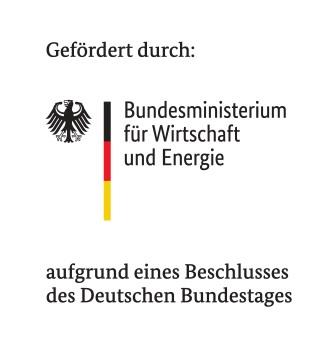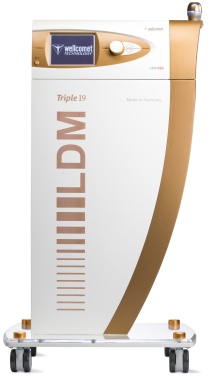LDM® Triple
das Gerät mit der triple-Erfolgstechnologie
Das LDM® Triple Gerät hebt sich vor allem durch seine besondere Dreifach-Ultraschallwelle (triple LDM®) von herkömmlichen Ultraschallgeräten ab und findet seinen Einsatz im breitgefächerten ästhetischen und dermatologischen Anwendungsbereich.
Es ist ganzjährig einsetzbar und kann problemlos mit einer Vielzahl von bestehenden Behandlungsmethoden effektiv kombiniert werden.
Die verwendeten Ultraschalltechnologien wie die 10 bzw. 19 MHz, LDM® und die triple LDM® Technologie können die Behandlungsergebnisse Ihrer Kunden intensivieren und sichtbar verbessern. Einmal getestet, werden Ihre Kunden von der neuartigen triple LDM®- Wirkung begeistert sein!
Für weite Informationen sowie eine ausführliche unverbindliche Beratung stehen wir Ihnen gerne unter der unten angegebenen E-Mail Adresse oder telefonisch zur Verfügung.
ANWENDUNGSMÖGLICHKEITEN:
Ästhetische Anwendungen
- Falten/ tiefe Falten
- Anti-Aging
- Hautfestigung (Gesicht/ Körper)
- Hautbildverbesserung
- Phonophorese (Gesicht/ Körper)
- Dehnungsstreifen/Cellulite
- Vor- und Nachsorge bei Schönheitsoperationen
Dermatologische Anwendungen
- Akne
- Akne Narben
- Atopische /periorale Dermatitis
- Ekzeme
- Hyperthrophe Narben / Keloide
- Ulcus cruris
WAS GENAU MACHT DIE LDM® TRIPLE TECHNOLOGIEN SO VIELSEITIG UND BESONDERS?
Während die meisten Ultraschallsysteme lediglich Frequenzen im Bereich 1 bis max. 5 MHz nutzen, und die eingeschallte Energie damit hauptsächlich weit unter der Dermis konzentrieren, benutzt das LDM® Triple zusätzlich Ultraschallwellen mit einer besonderen Frequenz von 10 MHz und 19 MHz.
Mit einer Halbwertstiefe von gerade mal ca. 3 mm /1,5 mm arbeiten diese beiden Frequenzen hauptsächlich in den oberen Hautschichten. Mit der 19 MHz Frequenz wird ein noch oberflächigeres Arbeiten speziell in der Dermis und der Grenze Dermis/Subkutis ermöglicht.
Weil diese besonderen Frequenzen eine Welle mit einer sehr kleinen Wellenlänge von ca. 150 μm/ 75 μm besitzen, können Sie darüber hinaus sogar einzelne Zellen bzw. kleine Zellgruppen beeinflussen und damit für einige spezifische Zellreaktionen verantwortlich sein, die sich qualitativ von Reaktionen auf herkömmliche Ultraschallwellen unterscheiden.
Was ist triple LDM®?
Triple LDM® beschreibt eine Weiterentwicklung der LDM® Technologie und beinhaltet, ähnlich wie die LDM® Technologie, einen blitzschnellen Wechsel zwischen unterschiedlichen Frequenzen. Als Innovation auf dem Ästhetik- und Medizinmarkt hebt sich diese besondere Technologie jedoch durch den Wechsel von drei Frequenzen gleichzeitig deutlich von anderen Ultraschallsystemen ab.
Die Verwendung von drei verschiedenen Frequenzen ermöglicht eine noch stärke dynamische Druckverteilung im Gewebe über mehre Schichten hinweg und kann zusätzlich zu einem differenzierten physiologischen Effekt führen. Neben der Kombinationswelle 1/3/10 MHz, arbeitet das LDM® Triple mit der Einstellung 3/10/19 MHz und integriert erstmalig die innovative 19 MHz Frequenz in der triple Technologie.
Wie wirkt LDM® auf das Gewebe?
Die beim LDM® Triple eingesetzten Ultraschallwellen sowie ihre LDM®-und triple LDM® -Kombinationen können einzelne Gewebsstrukturen modulieren und damit gezielt in die dynamischen Prozesse des Bindegewebes eingreifen. Sie regulieren beispielsweise nicht nur sog. Matrix Metalloproteinasen (MMPs), die primär für einen Gewebsabbau verantwortlich sind, sondern beeinflussen auch die Produktion sog. Heat Shock Proteine (HSPs), die für eine korrekte Proteinkontrolle im Gewebe notwendig sind. Auch der Hyaluronangehalt (HA) in der Haut kann mit bestimmten Ultraschallfrequenzen gezielt beeinflusst werden, was wiederum zu Turgor- sowie einigen rasch sichtbaren strukturellen Veränderungen im Gewebe führen kann.
Wie laufen Behandlungen mit LDM® Triple ab?
Hautbildverbesserung durch Turgorerhöhung, Verkleinerung der Hautporen sowie Glättung des Haut-Mikroreliefs können oft schon direkt nach der ersten Behandlung beobachtet werden. Diese Wirkungen konnten bereits in einer multizentrischen Studie erfolgreich nachgewiesen werden. Je nach Alter und Hautzustand wird empfohlen, eine Behandlungskur mit 2 Sitzungen pro Woche über einen Zeitraum von 4-6 Wochen durchzuführen. Für dermatologische Indikationen werden in der Regel 6-8 und in komplizierten Fällen 10-16 Behandlungen benötigt. Die konkrete Anzahl der Behandlungen richtet sich individuell nach dem Krankheitsbild und -verlauf.




